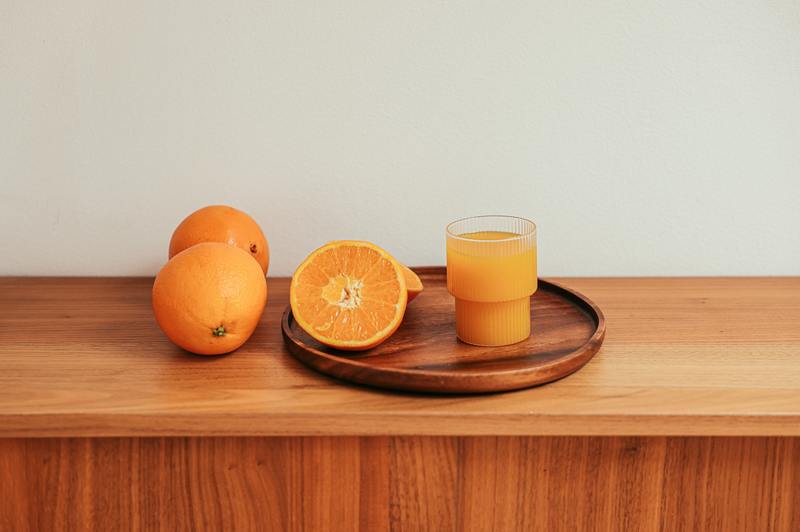Knowing how to fix water damaged spot on wooden table can help you save your furniture — both old and new. All you need to do to fix your table is to allow the wood to dry entirely, clean any dirt or mold that developed, and make the necessary fixes.
Water is incredibly effective at damaging wooden furniture, but the effects can be reversed. Continue reading to learn everything you need to know about salvaging your water-damaged wooden table!

How To Repair Water Damaged Spot On Your Wooden Table
Step #1. Remove the table from the source of damage
Small spots of water damage usually come from steaming mugs, cold drinks, or spilled liquids onto the table. Light water spots are easy to clean off, but darker areas usually indicate penetrating damage.
The first thing you should do when dealing with water-damaged tables is to get them away from the source of the damage. Usually, this means avoiding placing anything on the table until you finish.
Sometimes, the leaks are from damaged roofing or a broken pipe. In this case, you should consult with your insurance provider.
It would be best to consult with your insurance provider to see if water damage is part of your insurance coverage. Afterward, it is best to talk to a lawyer to know your options during a claim.
Step #2. Dry the table completely
This step is simple if the water only reaches the surface of the table. You can dry the table by wiping off the water droplets.
However, if the water seems to have seeped in deeply, you should allow it to dry for a few hours. You can use blow dryers and fans to speed up the drying process.
Step #3. Get rid of light stains
To get rid of light stains, it would be best to apply oily furniture polish, petroleum jelly, or mayonnaise on the damaged area. The oils from these products can displace the water mark.
If the mark is stubborn, you can try using toothpaste. Rub a small amount of toothpaste onto it using a piece of cloth. You can also mix ½ teaspoon of baking soda with the toothpaste for a stronger solution.
Afterward, use mineral spirits and a soft cloth to wipe away any remaining stains. Before applying the mineral spirits on the stain, test it out on the underside of your table to see if it will not dissolve the finish.
Once the stains are gone, you should then wax your table using paste wax and a clean, soft cloth. Buff the wax afterward.
Step #4. Fixing darker stains
For darker, deeper penetrating stains, you will need a different set of steps. For this process, you will need oxalic acid crystals, sandpaper, and wood stain.
First, melt the oxalic acid crystals in hot water. Apply the oxalic crystal on the surface of the furniture and let it dry. You will know that the oxalic crystal liquid is dry when it looks powdery.
Rinse the powdery dust using clean water. It is best to repeat the process until the dark stains are removed. If you end up reaching the bare wood, lightly sand the area, then remove the dust particles using tack-cloths.
Once the dark stain is gone, you should apply a light coat of wood stain that is similar to the color of your table. Let the wood stain dry and reapply if necessary.
Step #5. Fixing deep damages
If the source of the water damage is anything other than mugs and cups, then the damage might be extensive. The signs of deeper damage are easy to spot and usually include swelling, warping, and cracking.
First and foremost, you should check for signs of mold growth. If mold did grow, you could use a solution of one-part vinegar and one-part water to kill the spores.
If the water damage turned the wood powdery, it would be best to remove them. Using a sharp knife, scrape off any water-damaged wood until what is left is hard and firm.
Once you remove the damaged wood, you can proceed to fill in the cracks and holes. For this step, you can use wood putty or wood filler sticks. It is best to choose the wood putty or stick that matches the color of your table.
Overfill the hole with the filler or putty until it comes out of the crack. Flatten the material as much as you can before it dries completely. Let the material dry according to the label, which usually takes eight hours.
Once the filler completely dries, sand down the excess until it blends with the surroundings. It would be best to use sandpaper between 120 and 220-grit. Clean the area using a tack cloth to remove fine dust particles.
Afterward, it would be best to finish the wood using wood stain. Wood stain can help match the color of the filler with the wood table while also providing additional protection.
Conclusion
Knowing how to fix water damaged spot on wooden table can help you keep your favorite furniture for a longer period of time. By following five simple steps, you can fix any level of water damage and save your table from being thrown out too early.
